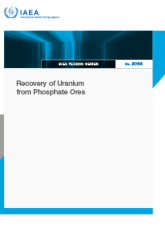Description
This publication outlines the main aspects and issues to be considered when developing and improving dissimilar metal weld inspections in nuclear power plants. It presents good practices and lessons learned, and provides guidance to inspection organizations and their managers and operating staff, and to the local suppliers who provide inspection services for utilities, as well as some practical case studies. The publication discusses requirements for an in-service inspection programme, different inspection techniques and methods, inspection qualification and evaluation of its results, and challenges, for ultrasonic inspection of dissimilar metal welds. The inspection programme and its requirements are based on the safety classification or safety significance of the component. An important aspect of this publication is the discussion of dissimilar metal welds repair and replacement techniques and how to mitigate or remove cracks and corrosion that might have an impact on the safety margins.
More Information on reusing IAEA copyright material.
Keywords
Quality Assurance, Nuclear Reactors, Maintenance, Repair, NPP, Nuclear Power Plants, Dissimilar Welding, SCC, Stress Corrosion Cracking, DMW, Dissimilar Metal Weld, Inspections, Good Practices, Lessons Learned, Case Studies, ISI, In-Service Inspection Programme, Repair Techniques, Methods, Evaluation, Results, Component, Replacement Techniques, Cracks, Safety Margins, Monitoring, Repair Approaches, Inspection Qualification, Equipment, Organizations, Operating Staff, Local Suppliers, Member States, Ultrasonic Inspections, Nuclear Industry, NDE, Non-Destructive Examination, ISI Requirements, Operating Experiences, Recommendations, Safety, Reliability, Acceptance Limits, Criteria for Defects, Remedial Action, Degradation Mechanisms, Acceptance Limits, Defects, Flaws, Practice, Training, Inspection Techniques, Mitigation Techniques
Related publications

2025

2025

2025

2025

2025

2025

2025

2025

2025

2025

2025

2025

2025

2024

2024

2024

2024

2024





















